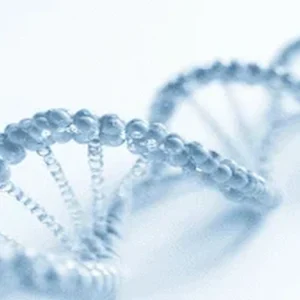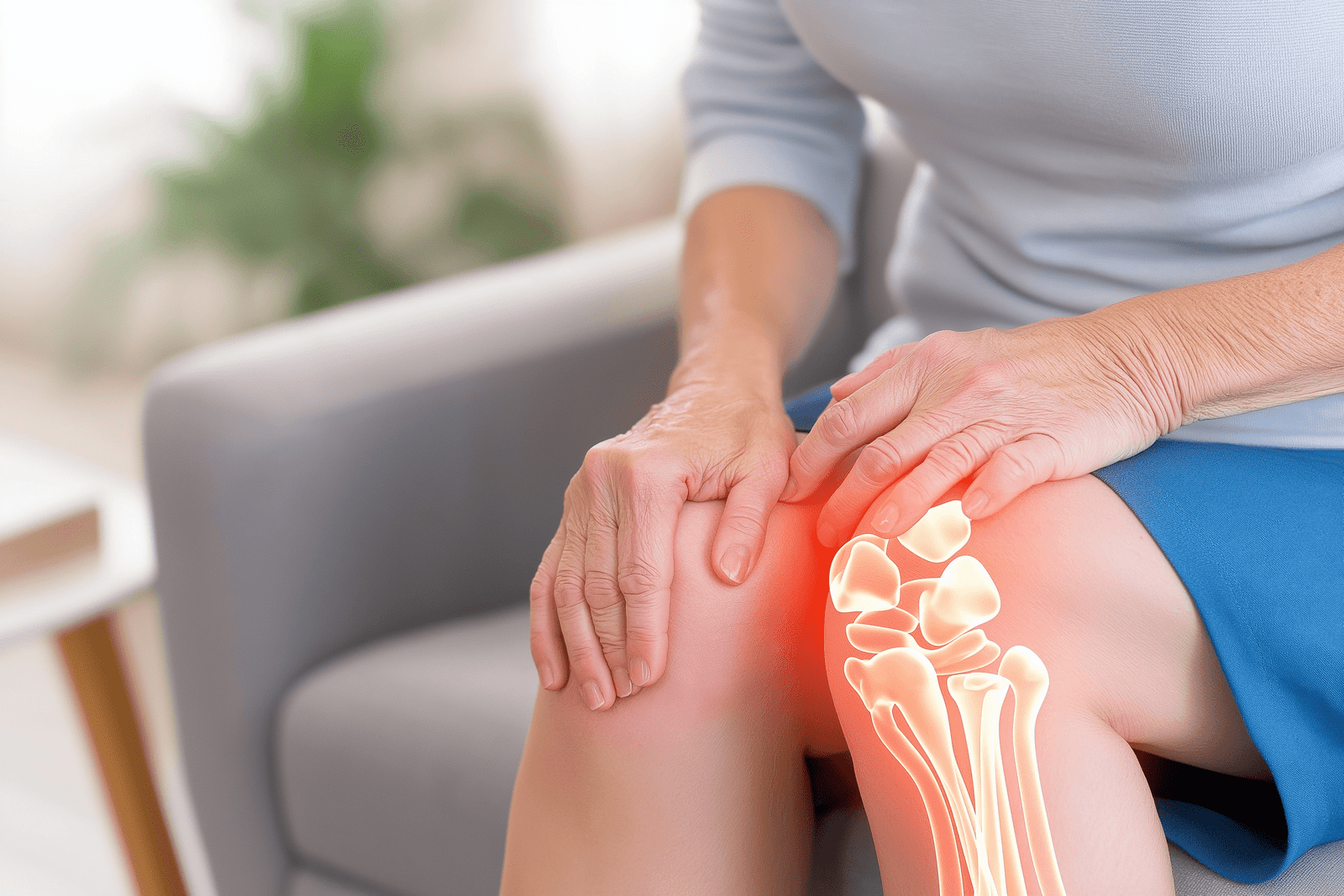Stem cell therapy for TBI is starting to gain traction, especially with SanBio’s conditional approval in Japan.
We’ve broken down each study in detail, but we know it’s a lot to digest.
At the start of the article, we’ve provided an initial summary of what all the research is telling us.
If you want to look at any study in particular, use the Content Table on the left to go to a particular study.
We hope this is helpful!
TBI Findings
What the Research Says About Stem Cells for TBI
Looking at the latest data, clinical research consistently shows that stem cell therapy is a safe procedure for patients with traumatic brain injury.
The most common benefits reported across multiple studies are improvements in motor function (the ability to move) and the preservation of brain tissue, particularly white matter, after an injury. In some trials, these improvements have been statistically significant compared to control groups, while in others, they represent positive trends that require more research.
The research indicates the cells do not typically regrow or replace damaged brain cells. Instead, they work primarily by releasing “healing signals” that calm inflammation, protect surviving neurons & help the brain repair itself by forming new connections.
The most commonly tested cells are Mesenchymal Stem Cells, often sourced from bone marrow or umbilical cords, and Bone Marrow Mononuclear Cells taken from the patient’s own body.
It is important to note the limitations found in the research. The field is still developing, and most trials have been small, have short follow-up periods, or lacked proper control groups, which makes it difficult to definitively prove effectiveness.
The studies also use very different methods, including different cell types, doses & delivery routes (IV, spinal injection, or direct brain implantation) making it hard to compare results and determine the single best approach.
Current Trials looking at Stem Cells treating TBI
There’s not many current trials looking at Stem Cells for TBI, we’ve collated below what we can!
TRAUMACELL Phase III Trial for Stem Cell Therapy treating Severe TBI: France
You can read more about the study here.
The TRAUMACELL trial is a major research study led by Assistance Publique–Hôpitaux de Paris. It’s designed to find out if stem cells taken from donated umbilical cords can reduce brain inflammation and help recovery in people who suffer a severe traumatic brain injury (TBI), compared to a placebo.
Start Date and Expected Completion Date
- Start Date: September 23, 2024 (first participant enrolled)
- Expected Completion: Around late 2027 (to allow for treatment + 14 months of follow-up for the last participant)
- Recruitment: Planned for 24 months, across three French hospitals
Participants
- Sample Size: 68 participants
- Age Range: 18–50 years old
- Condition: Severe traumatic brain injury (Glasgow Coma Scale < 12, visible brain injury on CT scan, needing intracranial pressure monitoring)
- Special Requirement: Patients must still be unresponsive 5 days after sedation is stopped, but considered stable enough that doctors have not decided to withdraw life support.
Procedure
- Delivery Method:Intravenous (IV) infusion into the bloodstream, not into the brain.
- Injection Timing:
- 3 infusions, each one week apart.
- Each infusion lasts about 45 minutes with close monitoring (blood pressure, heart rate, oxygen).
Cell Dosage:
- 2 × 10⁶ MSCs (2 million cells) per kilogram of body weight per infusion.
- For example: a 70 kg patient would receive ~140 million cells each time, or ~420 million cells total over 3 doses.
Control Group:
- Receives a placebo infusion (salt solution with albumin), prepared and delivered in the exact same way.
Cell Type Used
- Allogeneic Mesenchymal Stem Cells (MSCs): meaning the cells come from a donor, not the patient.
- Source: Wharton’s Jelly, the soft tissue inside the umbilical cord.
- Reason: These MSCs are known to have strong anti-inflammatory and immune-calming properties compared to cells from bone marrow or fat.
How Cells Were Prepared
- One umbilical cord donation was used to create a single master batch of cells (to keep consistency across all patients).
- Cells were grown and expanded in the lab at the MEARY Cell and Gene Therapy Center (Hôpital Saint-Louis, Paris).
- Manufacturing followed Good Manufacturing Practice (GMP) standards for advanced therapies, ensuring safety, purity, and reproducibility.
Next Steps
- Follow-up visits and imaging:
- Phone check-ins at 2 and 4 months after treatment.
- PET-MRI scan and neurological exams at 6–8 months.
- A second neurological assessment at 12–14 months.
- Final Results: The study will measure if stem cells reduce brain inflammation seen on scans, and whether patients recover better cognitively and functionally compared to placebo.
- Final analysis will be done once all participants complete their 14-month follow-up.
Previous Trials looking at Stem Cells for TBI
Here we look at previous research, post 2020 looking at Stem Cells treating TBI.
Best Stem Cell Therapy clinics for TBI
We don’t let any clinic just sign up or pay to be listed.
We speak to every clinic directly and review their medical team, the treatments they offer, how their stem cells are sourced and how they follow up with patients after treatment.
We also review licensing documents to confirm they meet the legal and medical standards of the country they operate in. For example, whether cells are processed in a GMP-certified facility or if they provide documentation on stem cell quality.
Clinics must also agree to let us collect and publish independent patient reviews. Both positive and negative.

Why Use Alt Treatment?
We don’t just list clinics, we help you choose the right one, get the best pricing and support you through the entire journey. For free.
Compare with Confidence: Get clinic matches based on your condition, location, and budget.
Ask the Right Questions: Know what to ask before committing
Save on Treatment: Unlock exclusive discounts on vetted clinics and follow-up care.
We’re With You After Treatment: We check in post-treatment and help resolve any issues.
Travel & Visa Help: Need to travel for care? We can help with logistics, documents, and local tips.
Found a Clinic Elsewhere? We’ll check their licensing and track record for you, free of charge.
No Strings Attached: Even if you choose a clinic we don’t partner with, we’re still here to help you make the best decision.
Top Stem Cell Therapy Clinics for COPD
We’ve vetted Stem Cell Therapy clinics globally who treat COPD. Information on their processes, standards they follow & prices are on their profiles.
Compare Clinics GloballySan Bio STEMTRA (AKUUGO) Phase II 1 Year Follow Up: Stem Cells for TBI: USA, Japan & Ukraine
You can read more on this study on its Pubmed Page.
This study tested whether implanting lab-modified stem cells (called SB623 mesenchymal stromal cells) directly into the brain could improve long-term motor deficits in people who had a traumatic brain injury (TBI) at least 1 year earlier.
It was a Phase II randomized, double-blind, sham-controlled clinical trial (meaning neither patients nor evaluators knew who got real cells vs. sham surgery).
- At 24 weeks, SB623 stem cell implants significantly improved motor function compared to controls and the 5 million cell dose maintained a clear benefit even at 48 weeks.
- The SB623 cells did not replace neurons directly but instead released healing signals that reduced inflammation, promoted repair, and supported neuroplasticity in the injured brain.
- The treatment was safe, with no deaths or withdrawals; the most common side effect was headache, and serious adverse events occurred at similar rates in both the treatment and control groups.
Study Details
Participants:
- 63 patients with moderate-to-severe TBI.
- Average age: 34 years. 70% were male.
- Patients were, on average, 8 years post-injury.
- All had chronic motor deficits (like weakness or impaired movement).
Procedure:
Patients were randomized into 4 groups:
- 2.5 million SB623 cells
- 5 million SB623 cells
- 10 million SB623 cells
- Sham surgery control (burr hole but no cells delivered)
Delivery method:
- Cells were implanted directly into brain tissue near the site of injury using stereotactic neurosurgery (through a small burr-hole craniostomy).
Cell used:
- SB623 mesenchymal stromal cells = bone marrow–derived stem cells from donors.
- They are genetically modified with something called the Notch-1 intracellular domain, which makes them more active and better at supporting brain repair.
How cells were prepared:
- Produced at Lonza Biologics (Portsmouth, NH) under strict GMP conditions.
- Not immunosuppressed, patients did not need drugs to stop rejection.
Follow-up:
- 24 weeks (primary endpoint)
- 48 weeks (final 1-year analysis)
Results
- Primary outcome (FMMS motor score, a test that measures how well a person can move their arms and legs after brain injury, with higher scores meaning better motor function.):
- SB623 pooled (all doses):
- At 24 weeks, patients improved by +8.3 points on the FMMS motor score, compared to +2.3 points in the control group
- At 48 weeks, patients improved by +7.5 points, while the control group improved by +4.1 points. But this time the difference was not statistically significant
- 5 million dose:
- At 24 weeks, patients improved by +10.9 points compared to +2.4 points in the control group
- At 48 weeks, patients improved by +10.5 points compared to +4.1 points in the control group
- This was the most effective and consistent dose.
- Other measures:
- Other tests of arm movement (ARAT), disability level (DRS), walking speed and quality of life (NeuroQOL) showed more improvement in the stem cell group, but the gains were not big enough compared to the control group to count as statistically significant after 1 year.
- SB623 pooled (all doses):
Adverse events:
- No treatment-related deaths.
- Serious adverse events occurred in both groups, but mostly judged not related to the cells.
- Most common side effect: headache.
How the Cells Worked
- SB623 cells don’t replace neurons directly.
- Instead, they release healing signals (growth factors, cytokines) that may:
- Reduce inflammation.
- Support repair and remodeling of injured tissue.
- Enhance neuroplasticity (help existing neurons form new connections).
- Improvements were sustained for 1 year, especially at the 5 million cell dose, but the overall trial suggests combining rehab + cell therapy may be needed for stronger long-term functional gains.
What We Don’t Know
- Whether benefits extend beyond 1 year.
- The ideal implantation site in the brain (since TBI damage can be diffuse).
- Why 5 million cells worked better than both lower and higher doses.
Conclusion
The world’s first double-blind, sham-controlled stem cell implantation study for chronic TBI shows that SB623 mesenchymal stromal cells can safely improve motor function in people with long-standing disability after brain injury.
The 5 million cell dose produced the clearest and most durable results, pointing the way for future research.
Now SanBio has received conditional marketing approval. It’s not a full approval, but clinics can use SanBio’s cells and treatment process as they gather more data.
Autologous Bone Marrow Mononuclear Cells for Severe TBI in Children: USA: Phase 2
You can read more about the study here
This clinical study tested whether autologous bone marrow mononuclear cells (BMMNCs, a mix of different cell types found in bone marrow, including some stem cells) could reduce symptoms and improve outcomes in children who had experienced a severe traumatic brain injury
The study was designed to see if BMMNCs could help protect the blood–brain barrier and reduce inflammation in the brain and spinal cord. The idea is that by doing this, these cells might help preserve the brain and spinal cord’s structure and improve patient outcomes.
The main goals were to measure how BMMNC infusion affected:
- Brain volumes — the overall size of different brain regions.
- White matter — the lighter tissue made of nerve fibers that carry signals between brain regions.
- Gray matter (GM) — the darker tissue that processes information.
- Corpus callosum (CC) — the thick bundle of nerve fibers that connects the left and right sides of the brain.
- Microstructural integrity — the health of the tiny structures inside brain tissue.
To study these, researchers used MRI (Magnetic Resonance Imaging), which creates detailed images of the brain using magnets and radio waves.
It was led by researchers at The University of Texas Health Science Center at Houston (UTHealth Houston) and Phoenix Children’s Hospital in Houston, TX and Phoenix, AZ.
RESULTS SUMMARY
• Treatment with BMMNCs was linked to children spending less time in intensive care.
• It led to significant preservation of white matter volume in the brain one year after injury.
• The stem cells worked by calming immune and inflammatory responses, protecting the brain’s barrier and tissue rather than becoming new brain cells.
• The treatment was found to be safe and logistically feasible, with no serious adverse events.
Participants:
- 47 children aged 5-17 with severe traumatic brain injury (Glasgow Coma Scale score ≤ 8)
- 37 patients completed the 1-year follow-up.
Procedure
- Delivery Method
- A single intravenous (IV) infusion within 48 hours after injury.
- Cell Type & Source
- Autologous bone marrow mononuclear cells
- Dosage
- Two different doses of cells were tested:
- Low dose: 6 million cells for every kilogram of body weight
- High dose: 10 million cells for every kilogram of body weight
- Low dose: 6 million cells for every kilogram of body weight
- Two different doses of cells were tested:
Key Results
- Brain Structure Preservation (Primary Efficacy Endpoint)
- Researchers wanted to see how the brain was holding up structurally after treatment. To do that, they used MRI scans to measure the actual size and health of different brain parts:(specifically white matter, gray matter, and the corpus callosum)
- White matter volume at 1 year was significantly better preserved in the BMMNC group compared to the placebo group. Children treated with BMMNCs had a much smaller decrease in white matter volume (19,891 units vs. 40,491 units, P = 0.01).
- Researchers looked at the corpus callosum, the large bundle of nerve fibers that links the two sides of the brain. They measured the number of “streamlines” (a way of showing how many nerve connections are still intact).
- In children who got BMMNCs, there was a smaller loss of these connections compared to those who got a placebo, which suggests that the treatment may have helped preserve brain connectivity.
- However, the difference between the two groups was not statistically significant (P = 0.055) because the results varied a lot between patients. In science terms, that means the finding was suggestive but not strong enough to be called definite.
- There were no significant differences between groups in gray matter, total brain volume, or in overall functional and neuropsychological outcomes, although both groups improved significantly over time.
- Researchers wanted to see how the brain was holding up structurally after treatment. To do that, they used MRI scans to measure the actual size and health of different brain parts:(specifically white matter, gray matter, and the corpus callosum)
- Intensive Care Unit Utilization (Secondary Endpoints)
- Children who received BMMNC treatment spent less time in intensive care: about 3 days fewer on a ventilator (23% less), 1 day fewer with intracranial pressure (ICP) monitoring (16% less), and 3 days fewer in the ICU overall (14% less).
- These reductions could make a real difference in recovery, but they were not statistically significant because the results varied a lot between patients.
Safety
- No serious adverse events were reported related to the bone marrow harvest or the cell infusion.
- There were no significant changes in blood pressure, harmful increases in intracranial pressure, or complications like bleeding or infection at the harvest site.
How the Cells Worked
- The researchers believe the stem cells helped by modifying the body’s response to injury and controlling inflammation. They propose:
- The cells may preserve the blood–brain barrier
- The cells may diminish inflammation in the brain and spinal cord
- They suggest the treatment may work by modulating microglial activation. Meaning it affects how microglia (the brain and spinal cord’s first-line immune cells) respond. This could explain why white matter was better preserved.
What We Don’t Know
- Small Sample Size: The study had a relatively small number of participants
- Direct Mechanism Confirmation: The study did not directly measure the activity of microglia, which are thought to be key cells affected by the treatment.
- Functional Outcome vs. Brain Structure: While brain structure was preserved, the study did not find a statistically significant difference in overall functional outcomes (how patients felt or functioned in daily life) between the treated and placebo groups. This Phase 2 trial was designed to look at imaging endpoints, not functional ones.
Conclusion
This study shows that giving children their own bone marrow cells (BMMNCs) within 48 hours after a severe traumatic brain injury is safe and doable.
- Key takeaway 1: The treatment cut white matter loss in half after one year compared to what usually happens with severe TBI.
- Key takeaway 2: Children also needed less time on a ventilator, less monitoring of pressure inside the skull (ICP), and fewer days in the ICU.
More research, especially a larger Phase 3 trial focused on long-term patient outcomes, is still needed before approval. But these results give strong early evidence that BMMNCs may protect brain tissue and lessen the need for intensive care in children with severe TBI.
NeuroGen Autologous Bone Marrow Derived Stem Cell Therapy Trial on patients with Chronic TBI: India
You can read more on this study on its PubMed page.
This study tested whether giving patients their own bone marrow mononuclear cells (BMMNCs) through a spinal injection could help improve symptoms and daily functioning in people with chronic traumatic brain injury (TBI).
It was an open-label clinical study (meaning everyone received the real treatment, no placebo group) and patients were also enrolled in a structured neuro-rehabilitation program after the cell therapy.
RESULTS SUMMARY
• 92% of patients showed symptom improvements, and 60% improved on the independence scale (FIM) with statistically significant gains.
• The researchers hypothesized that the bone marrow mononuclear cells did not replace neurons directly but migrated to injury sites and released growth factors that reduced inflammation, protected neurons and promoted repair and new connections.
• The treatment was safe
Study Details
- Participants
- 50 patients with chronic TBI, average age: 29 years (range 7–64)
- 84% were male
- Most injuries were from road traffic accidents
- Time since injury: average <5 years for most patients
- Procedure
- Bone marrow aspiration: About 80–100 mL of bone marrow was taken from the hip bone.
- Cell isolation: The mononuclear fraction was separated using a density gradient method.
- Injection: The BMMNCs were injected intrathecally (into the spinal fluid between the 4th and 5th lumbar vertebrae).
- Dose: Each patient received about 128 million of their own bone marrow cells, injected into the spinal fluid (with nearly all cells alive and usable at the time of injection).
- Second dose: 15 patients received a repeat injection 6 months later.
- Cells Used
- The treatment used autologous bone marrow mononuclear cells (BMMNCs), meaning the cells came from each patient’s own bone marrow.
- These cells are a natural mix that includes blood-forming stem cells, immune cells, and progenitor cells that can support repair and healing in the brain.
- No culturing or genetic modification was done. The cells were freshly taken, processed, and injected the same day.
- Rehabilitation
- Every patient received a personalized neurorehabilitation plan including physiotherapy, occupational therapy, speech therapy, aquatic therapy, and psychological support.
Results
- Overall improvement
- 92% improved in at least some symptoms.
- 50% had significant improvement (more than 60% of symptoms improved + better FIM score).
- 16% had moderate improvement, 26% mild, 8% no change.
- Symptom-specific improvement (examples):
- Attention/concentration: 85% improved
- Activities of daily living: 78% improved
- Balance: 69% improved
- Speech: 66% improved
- Memory: 47% improved
- Subgroups
- Younger patients (<18 years) responded better than adults (77% vs 54%).
- Milder TBI cases improved more than moderate/severe.
- Earlier intervention (<5 years post-injury) led to better results than waiting longer.
- Multiple doses (1 vs 2 injections) → no difference in outcomes.
How the Cells Worked
The researchers saw patients improve and brain scans show higher activity in key regions.
They did not test how the cells caused these changes.
Instead, they hypothesized (based on earlier lab and animal studies) that the cells may have migrated to injury sites, released healing signals and exosomes, reduced inflammation and possibly supported repair by helping existing brain cells form new connections.
What We Don’t Know
- Because there was no control/sham group, it’s hard to separate how much improvement came from cells vs. rehab.
- The ideal dose is unclear (1 vs 2 injections made no difference).
- Long-term effects beyond 6 years were not systematically tracked.
Conclusion
This study shows that giving patients their own bone marrow cells intrathecally, combined with rehab, is safe and can improve symptoms, daily function and brain metabolism.
Best outcomes were seen in younger patients, with milder injuries, treated sooner after their trauma.
Reviews looking at Stem Cell Therapy for TBI
A review is a type of scientific paper where researchers summarize and analyze the results of many past studies on a topic, instead of running their own new experiment.
It’s like reading all the available evidence and then explaining what it shows overall. What’s working, what isn’t, and where the gaps are.
Unlike a clinical trial, which tests a treatment on real patients, a review pulls together findings from multiple trials to give a big-picture view.
2020 Review on Stem Cells Treating Traumatic Brain Injury (TBI): Italy
This review was published in Medicina in 2020 where you can read more about it.
A group of Italian researchers from the IRCCS Centro Neurolesi “Bonino-Pulejo” in Messina pulled together all the available clinical trials to see if stem cell therapy could help people recover from traumatic brain injury (TBI).
RESEARCHERS’ THOUGHTS SUMMARIZED
• Stem cell therapy is safe and shows promise for treating traumatic brain injury, helping reduce inflammation and support brain repair.
• The benefits seem to come more from the healing factors stem cells release (growth factors, cytokines) rather than from the cells themselves becoming new brain cells.
• No major side effects reported
What They Looked At:
- 18 clinical trials from clinicaltrials.gov plus additional ethics-approved studies.
- Focused only on stem cell transplantation in TBI patients (not drugs that just stimulate stem cells).
Types of Stem Cells Reviewed
- Neural Stem Cells (NSCs): from the brain itself; can form neurons, astrocytes, oligodendrocytes.
- Bone Marrow MSCs (BM-MSCs): release growth factors, studied in both IV and lumbar puncture delivery.
- Adipose-Derived MSCs (AD-MSCs): from fat tissue; easy to obtain;
- Umbilical Cord MSCs (UC-MSCs): low risk of rejection;
- Bone Marrow Mononuclear Cells (BMMNCs): a mix of bone marrow stem/progenitor cells; reduce inflammation and protect brain tissue.
- Bone Marrow Progenitor Cells (BMPCs): tested in acute pediatric TBI.
- Modified MSCs (SB623): bone marrow MSCs engineered with Notch-1 signaling; showed strong motor recovery in chronic TBI.
What They Were Trying to Find Out
- Is stem cell transplantation safe in children and adults with TBI?
- Does it improve outcomes like motor function, cognition, and independence?
- Does it protect brain tissue seen on MRI after trauma?
- Can it reduce harmful inflammation (IL-1β, IFN-γ, TNF-α)?
- Which delivery method works best (IV, lumbar puncture, stereotactic injection, or intranasal)?
What They Found
- Effectiveness
- Chronic TBI (SB623 trial, NCT02416492): Significant improvement in motor function at 24 weeks compared to controls.
- Severe Adult TBI (BMMNCs, NCT01575470): Safe, no severe side events; preserved brain regions and reduced inflammatory markers.
- Pediatric Severe TBI (Liao et al., 2015): BMMNCs reduced treatment intensity for intracranial pressure; improved ICU outcomes.
- UC-MSCs (Wang et al., 2013): Patients had better motor function, balance, communication, and independence vs. controls after 6 months.
- BM-MSCs (Tian et al., 2013): Out of 97 patients, 38 improved; 11 regained consciousness from vegetative state, 27 improved motor function.
- Some trials still ongoing or unpublished (AD-MSCs, AD-cSVF, intranasal MSCs).
- Chronic TBI (SB623 trial, NCT02416492): Significant improvement in motor function at 24 weeks compared to controls.
- Mechanism of Action
- Stem cells help mainly through paracrine signaling:
- Release of growth factors (BDNF, GDNF, VEGF, NGF).
- Reduction of inflammation (↓ IL-1β, IFN-γ, TNF-α).
- Promotion of angiogenesis and neuroplasticity.
- Release of growth factors (BDNF, GDNF, VEGF, NGF).
- Less evidence that they directly turn into new neurons.
- Stem cells help mainly through paracrine signaling:
- Delivery Methods
- Intravenous (IV): most common; safe but few cells reach the brain.
- Lumbar puncture (intrathecal): common in UC-MSC and BM-MSC trials; showed functional gains.
- Stereotactic injection: used in SB623; targeted but invasive.
- Intranasal: experimental, ongoing trial only.
- Intravenous (IV): most common; safe but few cells reach the brain.
- Safety
- Across all trials: no major safety issues.
- Mild side effects: headache, dizziness, transient fever.
- No tumor formation or severe immune rejection reported.
- Across all trials: no major safety issues.
- Limitations Across Trials
- Many trials were small (often <50 patients).
- Short follow-up times (few studies >1 year).
- Different cell types, doses, and preparation methods.
- No standardized outcome measures across studies.
- Many trials were small (often <50 patients).
What They Concluded
Stem cell therapy is safe and shows real promise for reducing inflammation, preserving brain tissue, and improving recovery in traumatic brain injury.
The healing effect comes mostly from signaling molecules, not from stem cells directly becoming new neurons.
No single cell type or delivery method is clearly best yet.
- IV and lumbar puncture are most common.
- SB623 stereotactic injection showed the strongest motor gains.
There is a need for:
- Larger, long-term, controlled trials.
- Standardized protocols and imaging measures.
- Better understanding of which patients benefit most (age, injury severity, timing).
Conclusion: Stem Cell Research for TBI
There hasn’t been a lot of research done in the past 5 years. We didn’t look at studies pre 2020.
The main types of cells tested are:
- Bone marrow–derived cells (both modified and unmodified)
- Umbilical cord–derived cells
- Autologous bone marrow mononuclear cells in children
Results so far are encouraging:
- Several studies showed improved motor function, symptom reduction, or preserved brain tissue compared to control groups.
- Improvements often came from the healing signals stem cells release (reducing inflammation and supporting repair), rather than from the cells turning into new brain tissue.
Safety has been consistently strong, with no major treatment-related side effects across trials. The most common issues reported were mild, such as headache.
Still, the research is limited. Most trials have been small, short in duration, or lacked control groups. Results vary widely, and no single stem cell type or delivery method has yet proven to be the “best.”
If you are considering stem cell treatment for TBI, remember that clinical trials are carefully controlled. Real-world clinics may not follow the same safety, quality, or dosing standards used in research. While stem cells show real promise, more large-scale and long-term studies are still needed before they become a proven treatment for traumatic brain injury.
If you’re deciding which country is best for you, or you want to talk about clinics we’ve already vetted, fill out our form below. Our team will guide you with clear, honest answers.
Alt Treatment is a free, independent platform that helps you understand stem cell therapy & decide if it’s right for you.
We break down complex information into clear, honest guidance. When you’re ready, we can connect you with verified clinics that meet your needs, in the right location & often with exclusive discounts.
There’s no charge to use our platform. No hidden fees. No pressure. Our main aim is to genuinely help you figure out if treatment is right & the best places to consider.
If you want to talk, fill out our form here & our personal concierge team will reach out.
In theory, some stem cells do have the potential to grow cancer tumors. Read more about it on our article covering Stem Cell treatment Side Effects.
Countries like Colombia, Japan & South Korea offer TBI Stem Cell Treatments. To view the best countries for Stem Cell Therapy, check out our guide on Best Places for Stem Cell Therapy.
Fill in your details below
For a discounted offer for Stem Cell Therapy!






